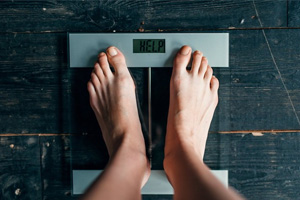How to start a yoga practice for physical and mental health?
Discover the transformative power of yoga as we guide you on how to start a yoga practice for physical and mental health Whether you re a novice or seeking to deepen your practice, our comprehensive guide will help you embark on a path to holistic well-being through yoga
Embarking on a journey of holistic well-being that nurtures both your body and mind is an enriching experience. Yoga, a practice that has been revered for centuries, offers a pathway to physical and mental health. But where do you begin, and what are the key steps to initiate a yoga practice that aligns with your well-being goals? In this guide, we will explore the essentials of starting a yoga practice, whether you're a complete beginner or someone looking to deepen your understanding of this ancient discipline. Let's delve into the world of yoga and unlock the physical and mental benefits it can bring to your life.

Understanding the Benefits of Yoga for Physical and Mental Health
The Physical Benefits of Yoga
Yoga offers a plethora of physical benefits. It enhances flexibility, gradually improving your range of motion. As you progress in your practice, you'll notice increased strength and muscle tone. Yoga postures and flows engage various muscle groups, promoting overall body strength. Additionally, yoga can aid in better posture, which helps prevent chronic aches and pains associated with poor alignment.
One of the standout benefits is improved balance. Many yoga poses require stability and concentration, which can enhance your balance and coordination. This is particularly valuable as you age, reducing the risk of falls and injuries. Furthermore, regular yoga practice can contribute to weight management. It may increase awareness of your body's needs and reduce overeating.
The Mental Benefits of Yoga
Yoga is not only about physical health but also mental well-being. It is renowned for its stress-relief capabilities. Practicing yoga promotes relaxation and mindfulness, reducing the production of stress hormones. It encourages deep, calming breaths that signal the nervous system to switch from the fight-or-flight response to the rest-and-digest state.
Improved mental clarity and focus are additional advantages. Yoga encourages you to be present in the moment, enhancing concentration. Regular practice can also elevate mood and alleviate symptoms of anxiety and depression. Many find that yoga helps them manage emotional reactivity, promoting a sense of inner peace and emotional stability.
Choosing the Right Yoga Style for Your Needs
Understanding Different Yoga Styles
Yoga is not a one-size-fits-all practice; it encompasses a variety of styles, each with its own focus and approach. Here are some popular yoga styles and their key characteristics:
- Hatha Yoga: Hatha is a gentle and foundational style that focuses on basic yoga postures and breathing exercises. It's a great starting point for beginners to build a strong yoga foundation.
- Vinyasa Yoga: Vinyasa is known for its fluid and dynamic nature. It involves a series of poses that flow seamlessly with breath. This style enhances flexibility, strength, and endurance.
- Ashtanga Yoga: Ashtanga is a rigorous and structured practice that follows a specific sequence of postures and is designed to build strength and flexibility over time.
- Iyengar Yoga: Iyengar places great emphasis on proper alignment and the use of props like belts and blocks. It's an ideal choice for those who want to focus on precision and posture.
- Bikram Yoga: Bikram, or hot yoga, takes place in a heated room with a set series of 26 challenging poses. The heat is believed to improve flexibility and detoxify the body.
- Yin Yoga: Yin is a slow and meditative style that involves holding postures for extended periods. It targets deep connective tissues and is excellent for relaxation and flexibility.
- Kundalini Yoga: Kundalini combines postures, breathing techniques, and mantra chanting to awaken energy within the body. It's focused on spiritual growth and inner awareness.
- Restorative Yoga: Restorative is all about relaxation and restoration. It involves using props to support the body in passive poses for extended periods, making it suitable for stress relief and healing.
Assessing Your Goals and Needs
When choosing the right yoga style, it's important to consider your goals and needs. Are you looking for a vigorous physical workout, stress relief, flexibility, or spiritual connection? Your preferences and physical condition play a crucial role in making the right choice. If you're a beginner, starting with Hatha or Vinyasa can be a good introduction. Those seeking a more spiritual practice might resonate with Kundalini or Iyengar. Experienced practitioners might enjoy the challenge of Ashtanga or the meditative aspect of Yin.
Trying Different Styles
Don't be afraid to experiment with different yoga styles. Attending classes or following online videos can help you get a feel for what resonates with you. It's common for practitioners to evolve and change their preferred style over time as their needs and interests shift.
Setting Up Your Yoga Space and Equipment
Create a Serene Yoga Space
Creating a dedicated yoga space is essential for a consistent practice. Choose a quiet and clutter-free area in your home where you can focus and relax. Ideally, your yoga space should have natural light and good ventilation. Add personal touches like soothing colors, plants, or inspirational quotes to make it inviting.
Yoga Mat Selection
The yoga mat is a fundamental piece of equipment. Choose a mat that suits your practice style. Thicker mats provide extra cushioning, while thinner ones offer better stability. Look for a non-slip surface to prevent injuries. Remember to clean your mat regularly to maintain hygiene.
Props and Accessories
Depending on the style of yoga you practice, you may benefit from props like blocks, straps, and bolsters. These aids can assist in achieving proper alignment and make poses more accessible. Consider what props align with your practice goals and have them available in your yoga space.
Comfortable Clothing
Wear comfortable and breathable clothing that allows for unrestricted movement. Yoga-specific attire is designed to provide flexibility and moisture-wicking properties, ensuring a comfortable practice. Don't forget to have a water bottle nearby to stay hydrated throughout your session.
Sound and Music
Enhance your yoga experience with soothing sounds or music. Many practitioners enjoy the serenity of nature sounds or instrumental music. Experiment to find what creates the right ambiance for your practice. Some yoga classes may also be available online with guided instructions and music.
Lighting and Ambiance
Soft and dimmed lighting can create a calming atmosphere. Consider using candles, Himalayan salt lamps, or string lights to add a touch of ambiance to your space. Avoid harsh, overhead lighting, as it can be distracting during your practice.
Organization and Storage
Keep your yoga space organized. Use shelves or storage baskets to keep your props and accessories tidy and easily accessible. An organized space will help you maintain focus and prevent distractions during your practice.
Getting Started: Basic Yoga Poses for Beginners
Mountain Pose (Tadasana)
Begin with the foundational Mountain Pose. Stand with your feet hip-width apart, arms at your sides, and palms facing forward. Engage your core, lengthen your spine, and relax your shoulders. Breathe deeply, grounding yourself and finding balance. This pose is an excellent starting point for building strength and awareness.
Child's Pose (Balasana)
Child's Pose is a restful and gentle posture. Start on your hands and knees, then sit back on your heels. Extend your arms forward and lower your forehead to the mat. This pose provides relaxation and stretches the back, making it perfect for releasing tension and stress.
Downward-Facing Dog (Adho Mukha Svanasana)
From a tabletop position, push your hips up and back, forming an inverted "V" shape with your body. Keep your hands shoulder-width apart and your feet hip-width apart. Press your heels toward the ground and your chest toward your thighs. Downward-Facing Dog builds strength, stretches the hamstrings, and energizes the body.
Warrior I (Virabhadrasana I)
Step one foot back and bend the front knee to a 90-degree angle, with the back foot turned slightly outward. Raise your arms overhead, keeping your torso facing forward. Warrior I enhances balance, strengthens the legs, and opens the chest. It's a powerful pose that encourages confidence and focus.
Cat-Cow Pose (Marjaryasana-Bitilasana)
This dynamic duo involves moving between Cat (rounded back) and Cow (arched back) positions. Begin in a tabletop position and inhale while arching your back (Cow). Exhale while rounding your back (Cat). This gentle flow helps improve spinal flexibility and relieves tension in the back and neck.
Corpse Pose (Savasana)
Complete your practice with the relaxation of Corpse Pose. Lie flat on your back with your arms and legs extended. Close your eyes and focus on deep, slow breaths. Savasana is a crucial part of any yoga practice as it promotes relaxation and rejuvenation. It allows you to integrate the benefits of your practice and reduce stress.
As a beginner, it's essential to start with these basic poses to build a strong foundation. Remember that yoga is a journey, and progress comes with time and consistent practice. Pay attention to your body, and don't push yourself too hard. Yoga is about self-discovery and finding your unique path to well-being.
Building Consistency in Your Yoga Practice
Set Realistic Goals
Consistency in your yoga practice begins with setting realistic goals. Define what you want to achieve with yoga, whether it's improved flexibility, stress reduction, or overall well-being. Be honest with yourself about the time you can dedicate to practice, and set achievable milestones that align with your goals.
Create a Schedule
Establish a regular yoga schedule that suits your daily routine. Consistency is easier to maintain when you allocate specific time slots for practice. It can be in the morning to energize your day or in the evening to unwind. Consistency in practice often relies on making yoga a non-negotiable part of your daily or weekly routine.
Start Small and Progress Gradually
If you're new to yoga, it's essential to start small and progress gradually. Overcommitting can lead to burnout and frustration. Begin with shorter sessions and easier poses, then slowly increase the duration and complexity of your practice as you become more comfortable. Gradual progress ensures a sustainable practice.
Find Accountability and Support
Consistency can be easier to maintain when you have accountability and support. Joining a yoga class or finding a practice buddy can provide motivation and encouragement. You can also use yoga apps or online communities to track your progress and connect with fellow practitioners.
Stay Open to Adaptation
Life is dynamic, and there will be times when your routine faces disruptions. It's crucial to stay open to adaptation. If you miss a session or can't stick to your regular schedule, don't be discouraged. Modify your practice to fit your current circumstances. Even short, gentle sessions or breathing exercises can help you stay connected to your practice.
Reflect and Celebrate Progress
Regularly reflect on your yoga journey and celebrate your progress. Keep a journal to document your experiences, insights, and achievements. Celebrating small victories can boost motivation and reinforce the habit of consistent practice. Recognize that consistency is about the journey, not just the destination.
Consistency in your yoga practice leads to a deeper connection with your body, mind, and spirit. It's a path to self-discovery and holistic well-being. By setting realistic goals, creating a schedule, progressing gradually, seeking support, staying adaptable, and celebrating your journey, you can build a strong foundation of consistency in your yoga practice.
Incorporating Yoga into Your Daily Routine
Start Your Day with Morning Yoga
One of the most effective ways to incorporate yoga into your daily routine is by starting your day with a morning practice. Wake up a little earlier and engage in a short yoga session to set a positive tone for your day. A morning yoga routine can include gentle stretches, sun salutations, and deep breathing exercises to energize your body and mind.
Lunchtime Yoga Break
If your mornings are too busy, consider taking a break during your lunch hour for a quick yoga session. Lunchtime yoga can help alleviate midday stress, improve posture, and boost productivity. Even a 15-20 minute sequence of stretching and relaxation exercises can make a significant difference in how you feel throughout the day.
Evening Wind-Down
As your day comes to an end, unwind with evening yoga. This practice can include restorative poses, gentle stretches, and deep relaxation techniques. Evening yoga helps release tension, prepares your body for a restful night's sleep, and promotes a sense of calm and balance after a busy day.
Yoga in Breaks and Transitions
Incorporate mini yoga sessions during breaks or transitions in your daily routine. Whether it's a few deep breaths, a quick stretch, or a short meditation, these moments can keep you grounded and centered. Consider doing a brief yoga routine when transitioning between tasks or after completing a demanding work assignment.
Create a Dedicated Yoga Space
Designate a specific area in your home for yoga practice. This space can be a corner of a room, a cleared-out space in your living room, or a cozy nook on your balcony. Having a dedicated yoga space helps create a consistent environment for your practice. Decorate it with soothing colors, inspirational quotes, and any props or accessories you need.
Set Reminders and Alarms
Use alarms or reminders on your phone or computer to prompt your yoga practice. Set reminders for your chosen practice times, whether it's morning, lunch, or evening. These reminders can help you stay committed to your daily yoga routine, especially when life gets busy.
Incorporating yoga into your daily routine doesn't have to be time-consuming. By making small adjustments and scheduling yoga at convenient times, you can enjoy the physical and mental benefits of yoga on a daily basis. Remember that consistency is key, and even short daily practices can lead to significant improvements in your well-being.
Advanced Yoga Practices for Enhanced Physical and Mental Well-being
Power Yoga
Power Yoga is a challenging and dynamic practice that combines traditional yoga poses with increased speed and intensity. It focuses on building strength, flexibility, and endurance. Advanced practitioners benefit from Power Yoga's rigorous nature, which provides a great cardiovascular workout and enhances overall fitness.
Yoga Inversions
Inversions, such as Headstand (Sirsasana) and Shoulderstand (Sarvangasana), are advanced poses that involve turning your body upside down. These poses offer numerous benefits, including improved circulation, reduced stress, and enhanced mental clarity. However, they should be approached with caution and learned under the guidance of an experienced instructor to avoid injury.
Pranayama and Meditation
Advanced yoga practices often incorporate Pranayama (breath control) and Meditation to deepen the mind-body connection. Pranayama techniques, like Kapalabhati and Nadi Shodhana, help regulate breath and energy flow. Meditation aids in enhancing mental focus, inner peace, and mindfulness. The combination of these practices fosters emotional balance and spiritual growth.
Advanced Asana Sequences
Advanced practitioners may explore complex asana sequences that challenge their strength, flexibility, and balance. These sequences can include arm balances, deep backbends, and intricate transitions. They require a deep understanding of alignment and the ability to perform the foundational poses with ease. These advanced sequences provide a sense of accomplishment and promote physical and mental resilience.
Kundalini Awakening
Kundalini Yoga includes practices to awaken the dormant energy within you, known as Kundalini. Advanced practitioners often delve into Kundalini practices, which involve specific breathing techniques, mantras, and postures. These practices aim to unleash this powerful energy, leading to heightened spiritual experiences and a deep sense of connection with the universe.
Advanced Yoga Philosophy
As you advance in your yoga journey, you may explore advanced yoga philosophy. This includes delving into ancient texts like the Yoga Sutras of Patanjali and the Bhagavad Gita. Understanding the philosophical aspects of yoga provides profound insights into the nature of consciousness, self-realization, and the union of mind, body, and spirit.
Advanced yoga practices offer a deeper level of physical and mental well-being. However, it's crucial to approach these practices with respect, patience, and the guidance of experienced instructors. Advanced yoga can be profoundly transformative and lead to a heightened sense of inner and outer harmony.
Common Challenges and How to Overcome Them
Lack of Time
One of the most common challenges people face in maintaining a regular yoga practice is a lack of time. Busy schedules and daily responsibilities can make it difficult to allocate time for yoga. To overcome this challenge, consider shorter yoga sessions. Even a 10-15 minute daily practice can provide substantial benefits. Prioritize your yoga practice by scheduling it into your daily routine, just as you would with other important activities.
Physical Limitations
Physical limitations, such as injuries, chronic conditions, or limited flexibility, can be a barrier to a consistent yoga practice. To overcome this challenge, it's crucial to practice with mindfulness and adaptability. Consult with a healthcare professional or experienced yoga instructor who can provide guidance on modifying poses to suit your condition. Many yoga styles offer variations and props that can be used to accommodate physical limitations without compromising the benefits of yoga.
Motivation and Discipline
Staying motivated and disciplined in your yoga practice can be challenging, especially on days when you're not in the mood. To overcome this, set realistic goals and remind yourself of why you started practicing yoga in the first place. Find inspiration through yoga communities, online resources, or inspirational yoga books. Consider practicing with a friend or joining group classes to stay motivated and accountable.
Mental Restlessness
A busy or restless mind can hinder your yoga practice. Overcoming mental restlessness involves cultivating mindfulness. Before beginning your practice, take a few moments to center yourself through deep breathing and meditation. Focus on the present moment and let go of racing thoughts. Incorporating meditation as part of your yoga routine can enhance your mental calmness and concentration.
Plateaus and Boredom
After practicing yoga for some time, you may encounter plateaus or feelings of boredom. To overcome this challenge, explore new yoga styles or advanced poses to keep your practice fresh and engaging. Attend workshops or retreats to learn from experienced instructors and gain new perspectives. It's important to embrace yoga as a lifelong journey of self-discovery, which involves continuous learning and growth.
Self-Judgment and Comparison
Comparing your progress or abilities to others can lead to self-judgment and discouragement. Yoga is a personal practice, and each individual's journey is unique. Overcome this challenge by focusing on your personal growth and celebrating your achievements, no matter how small they may seem. Let go of the need to compete or compare and practice self-compassion and self-acceptance.
Overcoming common challenges in your yoga practice requires patience, adaptability, and a genuine commitment to your well-being. By addressing these challenges with determination and an open heart, you can continue to enjoy the physical and mental benefits of yoga while nurturing a deeper connection with yourself.
Yoga and Mental Health: Stress Reduction and Mindfulness
The Stress-Mindfulness Connection
Stress reduction is one of the primary benefits of yoga, and it is closely tied to the cultivation of mindfulness. Stress can lead to various mental health issues, including anxiety and depression. Yoga practices, such as deep breathing, meditation, and asana (physical postures), promote relaxation and help individuals become more present in the moment. The mindfulness that yoga fosters allows people to better manage and reduce stress in their daily lives.
Deep Breathing Techniques
Yoga emphasizes the importance of breath control (Pranayama) to reduce stress and enhance mindfulness. Deep breathing techniques, such as Ujjayi breath and Nadi Shodhana, help individuals relax and release tension. These practices regulate the nervous system, improve oxygen circulation, and calm the mind. Regular deep breathing can reduce stress levels and promote a sense of mental clarity.
Mindfulness Meditation
Mindfulness meditation is an integral part of yoga and has been extensively studied for its positive effects on mental health. Practicing mindfulness involves observing your thoughts and sensations without judgment. It can be a powerful tool for stress reduction and emotional regulation. Regular mindfulness meditation sessions can lead to increased self-awareness, emotional resilience, and a more peaceful state of mind.
Yoga for Anxiety and Depression
Yoga is increasingly recognized as a complementary approach to managing anxiety and depression. The combination of physical postures, breath control, and mindfulness techniques helps individuals alleviate symptoms of these mental health conditions. Yoga's focus on grounding and calming the mind can reduce anxiety and provide relief from depressive feelings.
Stress Reduction Beyond the Mat
The benefits of yoga extend beyond the yoga mat into daily life. Mindfulness and stress reduction techniques learned through yoga can be applied in challenging situations. By practicing mindfulness, individuals can develop healthier responses to stressors and experience greater emotional equilibrium. Mindful living is a key component of yoga's contribution to mental health.
Scientific Validation
Scientific research supports the positive impact of yoga on stress reduction and mental health. Studies have shown that regular yoga practice can lead to decreased stress hormone levels, improved mood, and enhanced overall well-being. This validation underscores the effectiveness of yoga as a tool for stress reduction and mindfulness promotion.
Yoga's role in stress reduction and mindfulness is well-established. By incorporating deep breathing, mindfulness meditation, and yoga asanas into your daily routine, you can experience the mental health benefits of reduced stress, increased emotional resilience, and a greater sense of well-being. The scientific evidence further reinforces the effectiveness of yoga in promoting mental health and overall quality of life.
Yoga FAQs: Answering Your Questions on Starting a Yoga Practice
Q1: How do I begin a yoga practice as a complete beginner?
A1: Starting yoga as a beginner is a fantastic journey. Begin with a gentle yoga style, such as Hatha or Yin, and attend beginner-level classes. Invest in a yoga mat and comfortable clothing. Practice basic poses like Child's Pose and Downward Dog. Don't rush; focus on proper alignment and your breath. Gradually, you'll build confidence and can explore more advanced practices.
Q2: Can I do yoga even if I'm not flexible or physically fit?
A2: Absolutely! Yoga is for everyone. It's not about being flexible; it's about improving flexibility. Many yoga poses have modifications for various levels. Start with gentle stretches and build your strength over time. Yoga can actually help you become more flexible and physically fit as you progress in your practice.
Q3: How often should I practice yoga to see benefits?
A3: Consistency is key. Aim for at least 3-4 times a week for noticeable benefits. Regularity matters more than the duration of each session. Even 15-20 minutes daily can make a difference. As you advance, you can increase the duration and frequency based on your goals and schedule.
Q4: Do I need special equipment or a dedicated space for yoga?
A4: Not necessarily. While a yoga mat can be helpful, you can practice on any non-slip surface. Yoga doesn't require special equipment. As for space, a small area in your home is sufficient. Clear it of distractions and create a peaceful atmosphere. A dedicated space can enhance your practice, but it's not mandatory.
Q5: How does yoga benefit mental health and stress reduction?
A5: Yoga combines physical postures, deep breathing, and mindfulness techniques that reduce stress by regulating the nervous system and promoting relaxation. Mindfulness meditation helps you manage stress by increasing self-awareness and emotional resilience. Scientific research has shown that yoga can lower stress hormone levels and improve mood, contributing to overall mental well-being.










